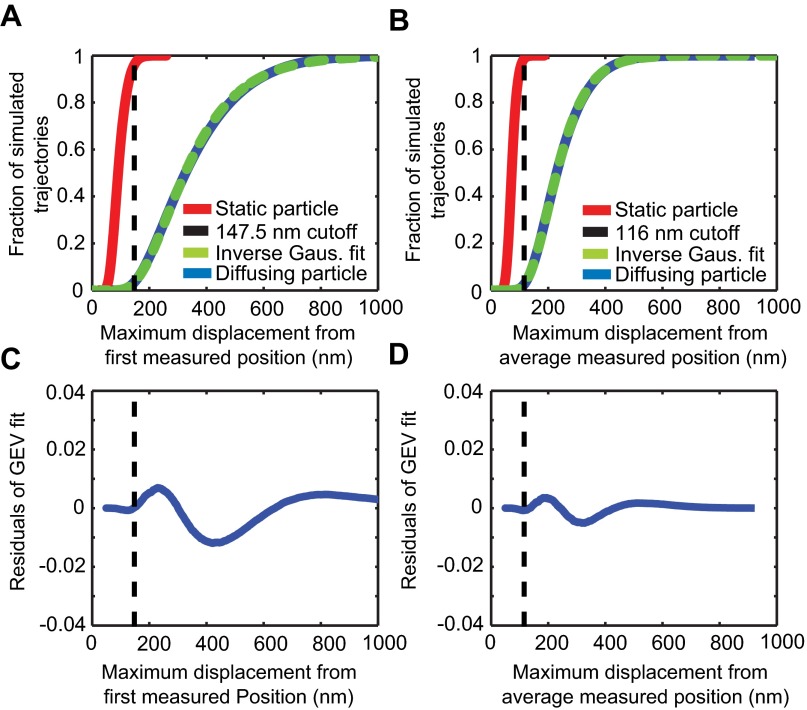Fig. S7.
Diffusing molecules can be readily distinguished from bound molecules in the presence of localization error of ∼35 nm. (A) The 200-ms simulations of static (red) or diffusing (blue) particles with 35-nm localization error were analyzed to find their maximum displacement from the initial position. The cumulative distribution function of diffusing particles was empirically found to be well-described by an inverse Gaussian cumulative function (green dashed line). A threshold for particles to be classified as unconfined was then set at 147.5 nm (vertical black dashed line), which corresponds to ∼3.6% of simulated static molecules being falsely classified as unconfined and ∼3.6% of diffusing particles being falsely categorized as confined. (B) Same as in A, except that the maximum displacement from the mean position was used. Because this metric was used to determine the duration of the confinements, the cutoff threshold (116 nm) was chosen to slightly favor confinement with 1.3% of static particles being classified as unconfined and 2.6% of diffusing particles being classified as confined. (C and D) Residuals of the inverse Gaussian fits to the simulated trajectories in A and B, respectively; vertical dashed lines indicate the confinement thresholds.

